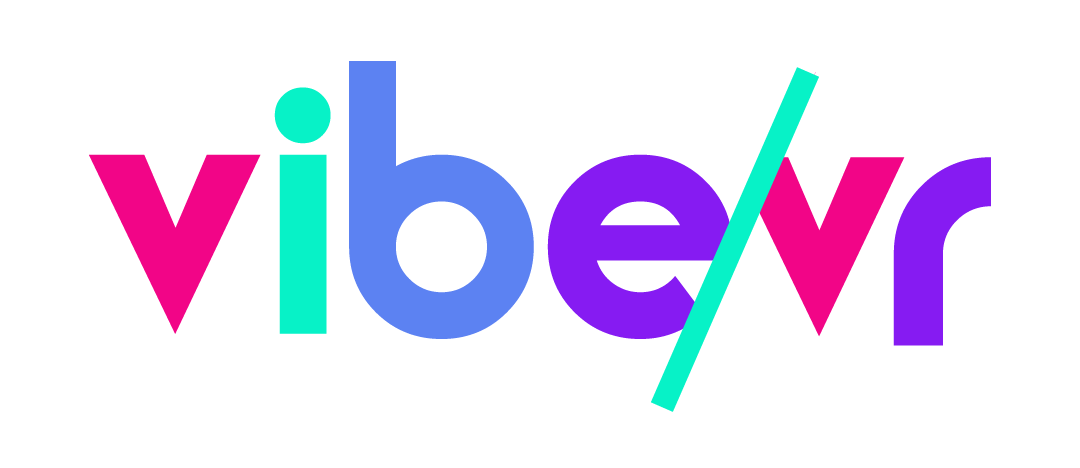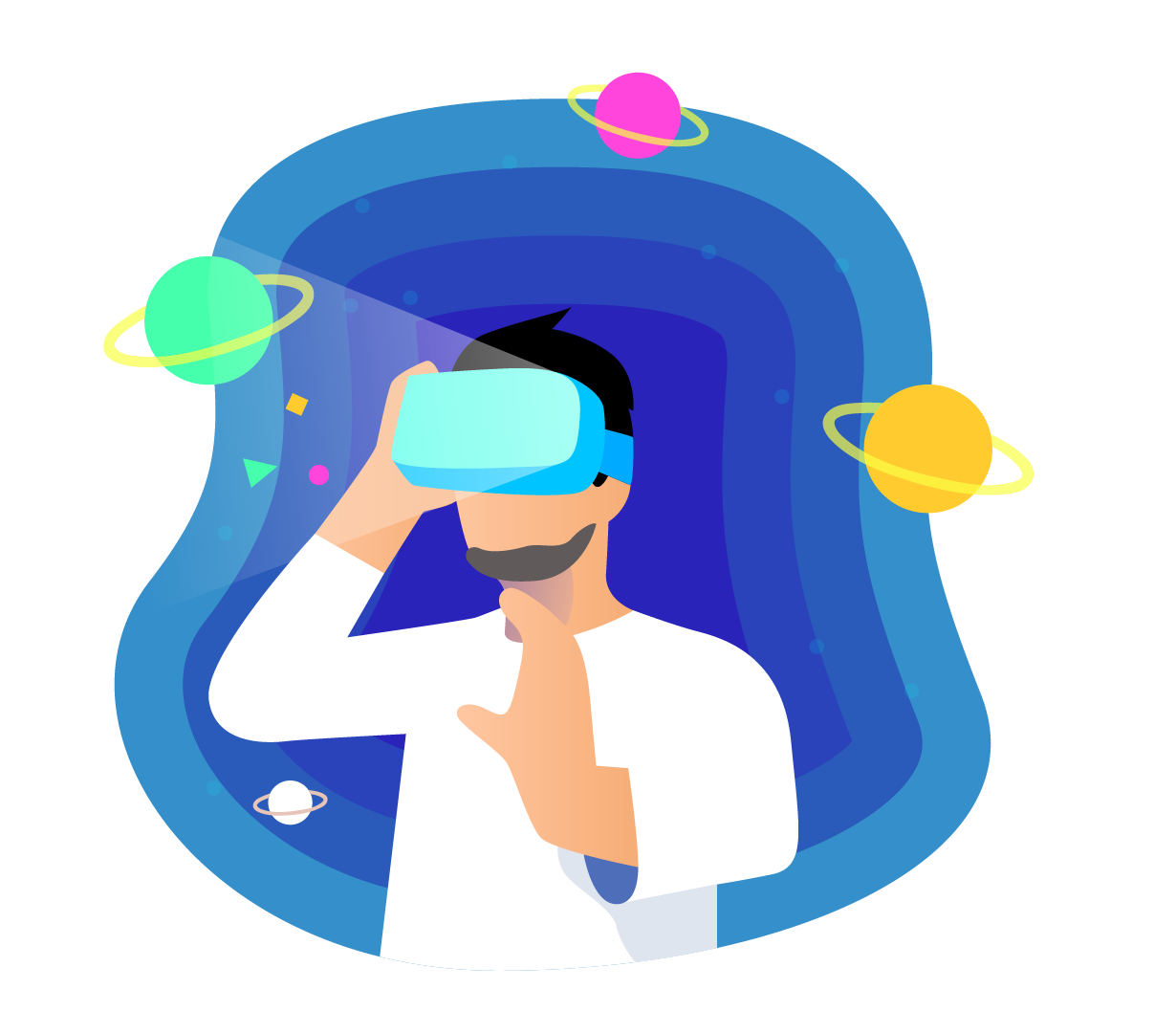Virtual Reality Explained
The Complete Guide to VR in the year 2022
VR - The Basics
In the past decade, Virtual Reality (VR) has evolved from a futuristic and novel idea to a powerhouse technology that is disrupting industries, inventing new ones, and redefining what it means to be “real.”
The concept of Virtual Reality has been within the mainstream for at least several decades and thanks to a perfect storm of technological innovations, it is now ready to be consumed and utilized by the mainstream on a daily basis.
But what is virtual reality?
And who uses it?
And what do they use it for?
Below you will find our best attempt to bring you up to speed with Virtual Reality in the year 2022.
We will cover the basics of the technology powering VR experiences, the major players within the tech world who are pushing the industry forward, as well as the most common VR devices and content.
VR technology is evolving rapidly, and people are finding new uses for the technology every day. Our goal is to provide you with the basic info and context that will help you understand how VR works and what unique advantages the technology has to offer. This will put you in a great position to follow and participate in the growth of virtual reality.

The XR Spectrum
The use of the word XR (Extended Reality) has grown considerably in the past few years with the emergence of easily accessible VR and AR (Augmented Reality) devices.
Extended reality is a term that encompasses both technologies as well as an entire spectrum in between. XR is also sometimes referred to as MR (Mixed Reality).
The virtuality continuum is a continuous scale ranging between the completely virtual, a virtuality, and the completely real, reality.

What is virtual reality?
“Virtual reality (VR) is a simulated experience that can be similar to or completely different from the real world.”
— Wikipedia Definition
We’re starting with what is possibly the most challenging question. What exactly is virtual reality?
The wikipedia definition above gives us a great starting point, but also leaves a lot of room for confusion. A video game is a “simulated experience,” so are video games VR?
The simple answer is no. The complicated one is maybe… Ultimately, what sets virtual reality apart from “simulated experiences” are what we describe as “immersion.”
“Immersion into virtual reality is a perception of being physically present in a non-physical world. The perception is created by surrounding the user of the VR system in images, sound or other stimuli that provide an engrossing total environment.”
— Wikipedia Definition
So when we discuss VR, what we’re really discussing is the act of being immersed in VR environments. This is typically done by blocking your senses from the physical world around you, most notable your vision.
A video game isn’t VR because it’s level of immersion is low, comparable to watching a show. We follow actions on the screen, but we’re still very much aware of our surroundings.
If we wanted to increase the level of immersion then we would need to eliminate distractions and start introducing stimuli to our senses that mimic how we experience the “real world.”
Our brains are simultaneously excellent at identifying even the smallest inaccuracies or inconsistencies in our world, and awful at distinguishing what’s real or what’s simulated. This is very evident in horror movies that cause us to jump, scream and react to images/sounds that we know with all certainty are not real, and pose no danger to us.
But how exactly do we immerse ourselves in a fake reality and maintain the illusion of reality?
Well that’s the magic of VR.

VR Devices and Experiences
The most common way to experience Immersive VR is through the use of a headset (HMD) that is either standalone (no cables) or tethered to a computer.
Headsets have become much more accessible as the cost has decreased significantly, introducing many new users to VR. But there are many ways to experience VR including full sized domes or even simulators.
Below you will find a list of common VR devices or technologies that are important to the industry or immersive experiences.

Oculus Quest
Oculus is owned by Facebook and is the current market leader for VR headsets. The Quest 2 was released in October 2020 and is one of the leading headsets available today. It is relatively cheaper than its competitors and benefits from not needing any cables or connections to separate devices like a PC or smartphone.
HTC Vive
After failing to gain a strong position in the smartphone market, HTC went all in with Virtual Reality. The HTC Vive is one of the most powerful VR devices available today and has impressive tracking features that make it very popular among gamers.
Unlike the Oculus Quest, the Vive can only function when attached to a powerful computer making it a less attractive option for casual users.
Pico Neo
Recently purchased by Tik Tok parent company Byte Dance, the Pico Neo is poised to be a major player in the VR industry. Like the Quest, the Pico Neo doesn’t require additional devices or connections.
Tracking.
Spatial awareness is an important part of maintaining the feeling of immersion. Virtual reality games and applications use different forms of tracking to follow your body’s movements and integrate them seamlessly into your VR experience.
Headsets often make use of external or internal cameras for tracking purposes. Tracking can allow you to roam around your environment and rely on sensors to tell you when you’re leaving a safe zone, or they can follow the movements of your hands and import those movements into your virtual world.
VR Treadmills
VR treadmills are “omnidirectional” and can truly enhance the level of immersion while in virtual reality. These treadmills are special platforms that let users move around their virtual environment while staying stationary in the real world. The treadmills sends real time data back to your virtual world and can truly enhance the feeling of “immersion” while also ensuring safety in the physical world.
Kat Walk VR Treadmill
Haptics
Haptics can make users feel as though they are touching something that isn’t actually there. It’s an important component of immersion whenever interacting with objects is a part of the user experience.
Smartphone screens often use haptic touch to mimic the sensations of pressing physical buttons. With VR experiences, haptics can take many different forms. Most VR Controllers have haptic touch but more advanced gloves or even full body suits can be used to increase the levels of immersion.
A haptic glove
Popular VR Uses in 2021
The VR industry is still being largely defined by its potential, especially as it rises in conjunction with AR technology. But in 2021 it was a several billion dollar industry and has seen significant investment from companies like Facebook, ByteDance (Tik Tok), Google and more.
Business.
VR offers countless solutions across different industries.
Gaming.
The VR gaming market continues to grow every year.
Media.
Entertainment options are endless, and VR gives us more to choose from.
Design.
VR offers the potential to quickly visualize things in ways that give a more accurate representation. From 3D models of office towers, to re-modeled kitchens, VR allows you to truly preview designs in ways that were never possible before.
Education.
When physical barriers are removed, a whole new world of educational opportunities are unleashed. Virtual classrooms, simulators and immersive video can be far more effective for education purposes compared to traditional 2D learning methods.
Sales.
“Try it before you buy it.”
What if you could test drive a car without ever entering the showroom?
360 Video
One of the most popular and widely used content types in virtual reality is 360 video. These types of videos use specialized cameras to capture panoramic images that can be viewed in immersive VR applications.
360 cameras use multiple lenses to record from all angles and then computer software is used in post production to stitch the images together (stitching process) into one cohesive panorama.
Insta 360 Pro 2
A 360 VR camera with six lenses.

The Future of VR
The concept of virtual reality has been around for quite some time, but we are only just reaching the tipping point where the technology will enter the mainstream.
Converging technologies, fearless entrepreneurs, sci-fi visionaries… There have been many factors and contributors that have helped usher this technology around.
Before we take a look at what we can expect from VR in the future, let’s see some key events that have led us here:
About Us
Vibe VR is a full service Virtual Reality Agency. Our goal is to help organizations provide innovative, immersive & impactful VR experiences.
Contact us.
Discover what all the hype is about. Contact us to arrange a free demonstration in person or virtually.
connect@vibevr.ca








